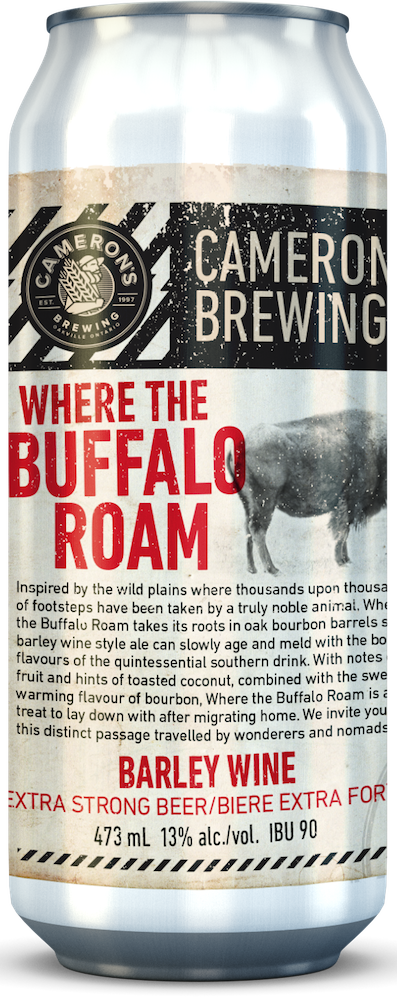Canada is on many people’s minds these days for cannabis — and rightfully so. But the country also boasts a well-established and growing craft beer industry. Canadian breweries have increased from 10 in the mid-80s, to around 450 in 2012 when the current craft wave began, to approximately 900 nowadays. And unlike Canadian cannabis, Americans can easily buy the country’s beers, thanks to importers shipping into the U.S.
Chances are you have already drank Canadian craft beer. Consumers in New England are familiar with Collective Arts, for instance, but may not know that the producer is from Ontario. And it’s not like Collective Arts brews taste any different from the best America beers.
Which exactly is to the point.
Craft Beer, Canadian Style

Ask a Canadian brewer about their country’s craft beer style, and they’ll likely look beyond their borders.
“I think the Canadian craft beer scene is pretty similar to the global movement of craft beer, both in terms of styles and experimentation,” says Peter Chiodo, founder and brewer at Flying Monkeys Craft Brewery. Since 2004 this brewery has helped lead the exploding Ontario beer scene, which alone counts 260+ breweries, with about 100 in the works.
“Obviously Canada is a smaller market than the U.S., but we also ship to 23 countries,” Chiodo says. “I think ‘local’ these days could be considered ‘global’ in some sense.”
Agreeing with him is Jason Britton, brewmaster at Cameron’s Brewing. The Ontario business has operated since 1997. “There are no boundaries in beer,” Britton says, “and no country does it better than any other. They all just do it differently. They have different regional styles and ingredients, and these show in the beers differently.”
So is there such a thing as, say, a Canadian IPA?
Chiodo says Flying Monkeys makes a “Canadian East Coast IPA,” which he defines as “inspired” by British IPAs. He clarifies these as hoppy ales with more of a malt backbone than American counterparts. Chiodo emphasizes, though, that these are not super-malty beers, but IPAs with a minor geographical difference than U.S variants — and still not as malty as European beers.
So what does define Canadian craft beer?
The answer, according to industry veteran and Ontario Craft Brewers consultant Drew Knox, is simply this: beers of high quality.
It was not always that way. Like the American craft industry, Canadian microbreweries boomed in the later ‘80s, before a bubble burst in the ‘90s. During this time period, sales of large Canadian breweries to global conglomerates, which moved some production out of the country, caused the reputations of these beers to suffer in America.
Not anymore. “The image of Canadian beer is going back to where it was in the ‘80s, when there was a general positive opinion towards it,” says Knox. “Especially around the Great Lakes. It’s been a slow process, but Canadian beers are beginning to get the reputation again of being clean, and of the highest quality.”
What Canadian Beers Sell in America?

Flying Monkeys has found great success down south. Imported by Esber Beverage Co., they’re in seven U.S. states, and expanding. The 20,000-barrell brewery is growing in America at a rate of 200% — compared with 35% overall. “We can’t make the beers fast enough” for the U.S., Chiodo says.
The most popular Flying Monkeys beers in America have been seasonals, as well as Juicy Ass American IPA, and Chocolate Manifesto, a triple chocolate milk stout. The popularity of these releases points to how Canadian beers succeed in the U.S.: by tying into trends, or standing out (or both).
After all, more than 7,000 breweries already operate in the U.S. “The competition is fierce,” says Knox of Ontario Craft Brewers. He points to Juicy Ass American IPA as the perfect Canadian beer for America.
“Peter hit it on the head with the name and the style,” Knox says. “He’s always ahead of the curve, or right on it. You need to differentiate on the shelf. You need to be moving with the trends. But you also can’t stand on your laurels, because trends fade out. You have to be able to already have what’s next, whether that’s barrel-aged, sours, botanicals or something else.”
Agreeing with Knox is Britton from Cameron’s Brewery. “You need to be different,” he says. “You can’t just put an IPA into the market and expect to get noticed.
Accordingly, Cameron’s focuses in America not on their traditional line but their barrel-aged specialties. This includes Where The Buffalo Roams, a 13%-ABV barleywine aged in Buffalo Trace bourbon barrels. Other imported beers from Cameron’s include Early Bird Barley Wine, aged in Buffalo Trace barrels with maple syrup and cold-steeped coffee, and the bourbon barrel-aged Deviator Doppelbock.
“We’re trying to create a niche in the [U.S.] market” Britton explains. “There’s a already lots of breweries in the U.S. selling IPAs, so we thought, ‘How can we be different?’ The proof is in the product. We’ve had a really good response in the U.S.”
Like Flying Monkeys, Cameron’s has also had success down here with seasonal releases. “With seasonals you have to be agile and nimble,” says Britton. “And you have to look for the road less traveled. We’ve shown that we can demonstrate our own flavors and techniques. We’ve set ourselves apart.”
Geography also helps. Some of the Canadian breweries with the most success in America are around the Great Lakes states. “There are 150 million consumers within 500 miles of Toronto,” says Knox.
While there are exemplary examples like Flying Monkeys and Cameron’s, overall, Canadian craft beer sales in America are “still embryonic,” Knox says. “The U.S. will never be a dominant source of sales for most Canadian breweries. But if you can get 10-to-15% of your business from America, that’s real good. It’s achievable, but it’ll take a while.”

Getting Into the U.S.
Part of what holds back most Canadian breweries from U.S. sales is the difficulty of reaching the market.
Finding the right importer is “rare,” says Knox of the Ontario Craft Brewers. These would be full import agencies that can handle the bureaucratic work, purchase the beer directly and warehouse it, monitor the beer after distributors take it (and can redirect if necessary) and have boots on the ground in the market.

Small craft brewers do not have the time or resources to handle all those tasks. It can be tempting to believe that an agency can take over all that for them. Knox hastens that breweries “be very careful with choosing an import agent, by doing their homework . . . Most importantly, you have to find someone who will actually pay you. The lack of U.S. import agencies with the right criteria is the first barrier to entry.”
There are some full-service importers like Esber Beverage Co. (through their Craft Beers of Canada division) who understand importing these beers, and possess the capabilities necessary. Even with the right import partner, Knox reminds Canadian brewers, “Don’t be in such a big hurry. It’s not a 100-yard race. It’s not the first two palates of beer that sell, but all those that come after.”
“I always tell brewers not to ship too much,” he adds. “They should ship palates, not truckloads. They better make sure their beer is fresh. They don’t have to be in the market every day, just on some days.”
For Canadian breweries that do enter America the right way, Knox foresees a great deal of opportunity here for growth. “U.S. beer consumers are very venturesome,” he says. “As long as we continue to keep producing high-quality products, we’ll do well.”
Kyle Swartz is editor of Beverage Wholesaler. Reach him at kswartz@epgmediallc.com or on Twitter @kswartzz or Instagram @cheers_magazine. Read his recent piece Does Cannabis Help Craft Beer Sales?









